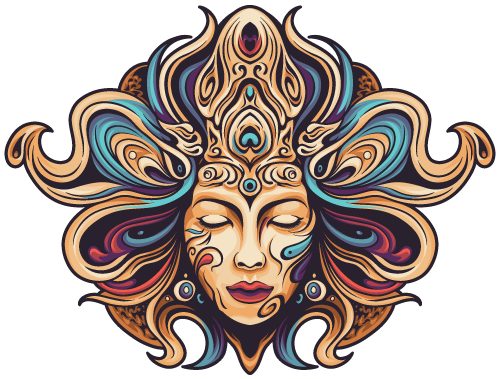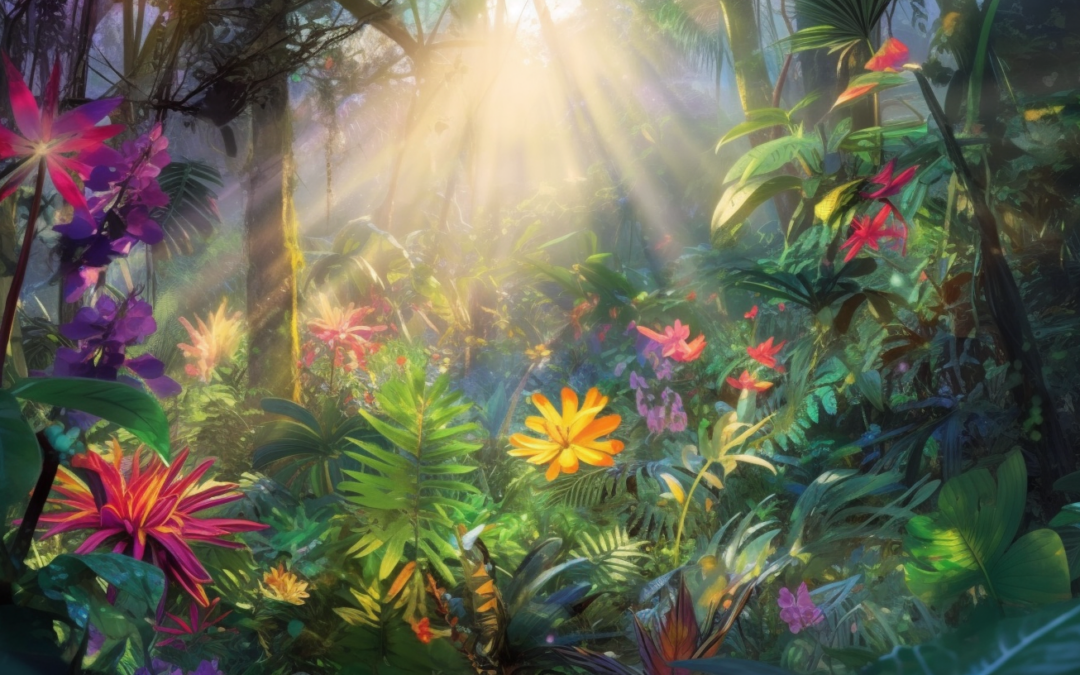List of Psychedelics
Psychedelics have been part of human cultures and spiritual practices for millennia. Recently, they’ve found new interest among researchers, therapists, and explorers of consciousness due to their potential for healing and personal growth. In this section, we will explore some of the most popular psychedelic substances, discussing their use and the cultures from which they emerged.
Lysergic Acid Diethylamide (LSD)
LSD, also known as “acid,” is a powerful synthetic psychedelic created by Albert Hofmann in the 1930s. It’s known for inducing profound shifts in consciousness, perception, and thought patterns. LSD has played a significant role in shaping modern psychedelic culture and has been the subject of extensive research for its potential therapeutic applications.
Psilocybin Mushrooms
Psilocybin mushrooms, often known as “magic mushrooms,” are fungi that contain the psychoactive compounds psilocybin and psilocin. These mushrooms have been used for centuries in many cultures, notably among indigenous peoples in Central and South America for spiritual and healing rituals. Today, they are gaining recognition in the medical world for their potential in treating a variety of mental health conditions, including depression and anxiety.
Dimethyltryptamine (DMT)
DMT is a potent psychedelic compound found in numerous plants and even in the brains of mammals. It is famously known as the active ingredient in Ayahuasca, a traditional Amazonian brew used for spiritual and healing purposes. DMT produces intense visual and auditory hallucinations and can profoundly alter one’s perception of self and reality.
Mescaline
Mescaline is a naturally occurring psychedelic found in several cactus species, including Peyote and San Pedro. Native North and Central American cultures have used mescaline for spiritual rituals for thousands of years. It induces visual hallucinations, deep introspective insights, and a strong sense of empathy and connectedness.
MDMA (3,4-Methylenedioxymethamphetamine)
While not a traditional psychedelic, MDMA, or “ecstasy,” is a psychoactive substance that elicits feelings of empathy, love, and emotional closeness with others. Its use originated in the 1970s and 1980s club scene, but has recently seen promising results in clinical trials for the treatment of PTSD.
Ayahuasca
Ayahuasca is a powerful psychedelic brew that originates from the Amazon rainforest. Indigenous tribes have used this combination of the Banisteriopsis caapi vine and the leaves of the Psychotria viridis plant for spiritual and medicinal purposes for centuries. The brew induces a deeply introspective and often challenging experience that can last several hours. Recent research has shown promising results in treating addiction, trauma, and depression.
Ibogaine
Ibogaine, a naturally occurring psychedelic found in the Tabernanthe iboga plant, is a central part of the Bwiti religion of West Central Africa, especially in Gabon. In recent years, it has garnered attention in Western societies for its potential in treating drug addiction. Ibogaine is known for inducing intense, dream-like states and introspective experiences, which some users have found beneficial for personal growth and self-understanding.
Salvia divinorum
Salvia divinorum, commonly known as “Salvia,” is a plant native to the cloud forests of Mexico. The Mazatec Indians have traditionally used it for spiritual divination and healing. Salvia is unique among psychedelics for its action on the kappa opioid receptors in the brain, leading to intense but short-lived experiences, often described as more dysphoric and less euphoric than other psychedelics.
5-MeO-DMT
5-MeO-DMT is a naturally occurring psychedelic found in various plants and the venom of the Bufo Alvarius toad. Known for inducing brief but extremely intense experiences, it’s often described as one of the most powerful entheogens. Its use in a ceremonial context has grown in popularity over the past years, with anecdotal reports suggesting potential benefits for mental health and personal development.
Ketamine
Although initially developed as an anesthetic, Ketamine has psychedelic properties at sub-anesthetic doses and is used recreationally and therapeutically. Its unique mechanism of action and rapid antidepressant effects have led to a surge of interest in its potential for treating severe depression and other mental health conditions.
Conclusion
Psychedelics, whether natural or synthetic, plant-based or animal-derived, offer a diverse palette of experiences and potential therapeutic applications. As we continue to rediscover and integrate these ancient and novel tools into our societies, it’s crucial to approach them with respect, curiosity, and a commitment to safety and personal growth.

